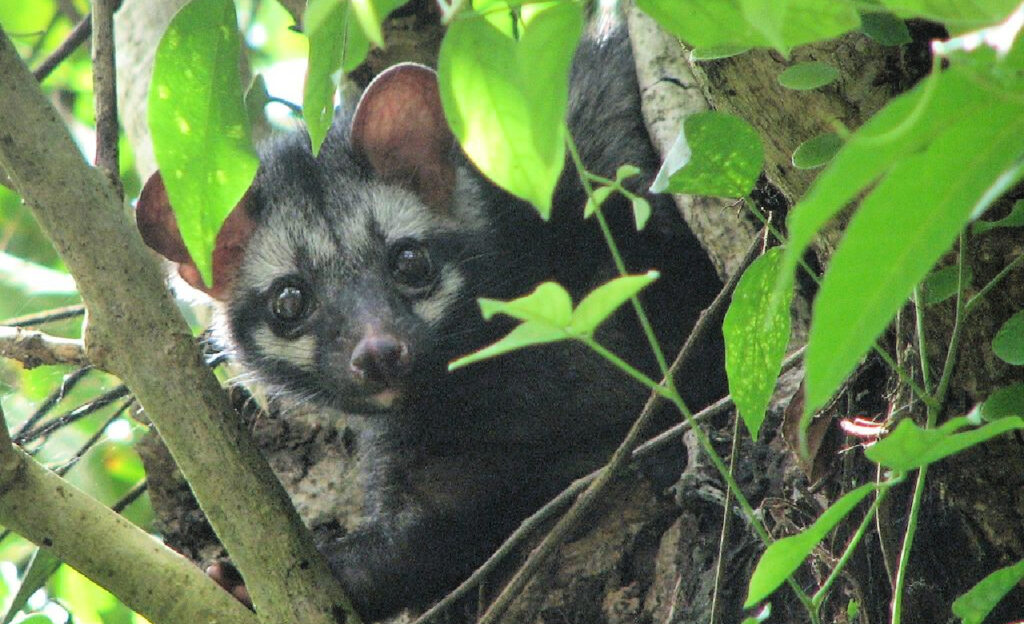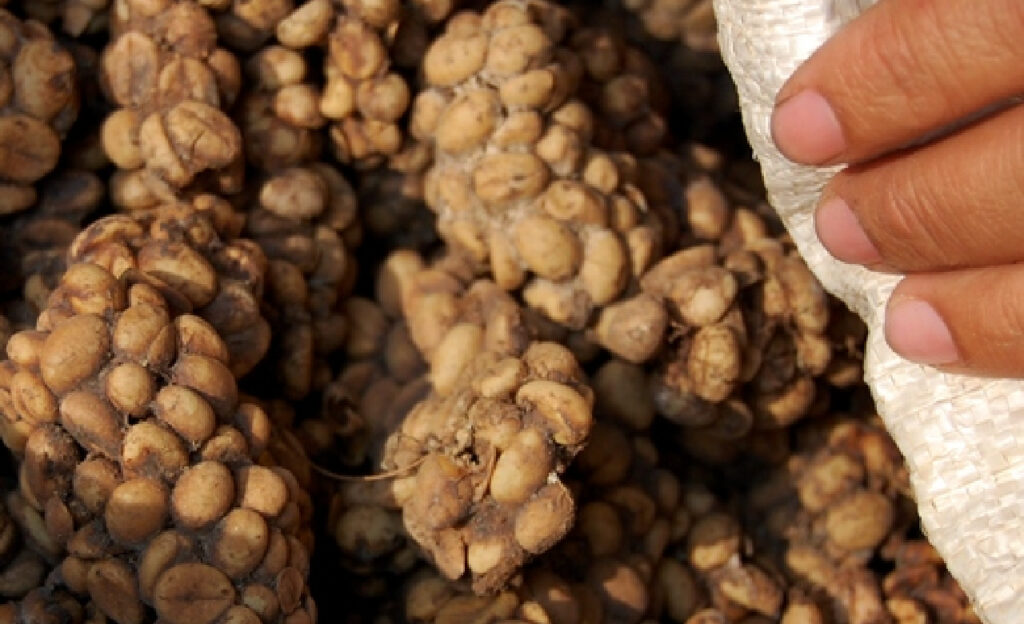
Praveenp, CC BY-SA 3.0, via Wikimedia Commons
Over the years I’d heard rumors about a mysterious coffee from the mystic east. It was said that this particular coffee was made from the berries of the coffee plant eaten by wild creatures, with the cherries excreted and then collected for processing. The coffee in question is called Kopi Luwak. It’s produced on the Indonesian Islands of Sumatra, Java, Bali, Sulawesi, and in East Timor. As advertised, Kopi Luwak is made from partially digested coffee cherries eaten by the Asian Palm Civet. The cherries are fermented as they pass through the cat’s digestive tract. After defecation, the cherries are collected and the beans dried, roasted, and processed.
I’ve always been curious to try this most exotic of all coffees. The opportunity came a few years ago when a friend sent me pre-packaged capsules of Kopi Luwak from the legendary Harrod’s of London for a birthday gift. I quickly fired up the Nespresso machine and used one of the capsules.
Did Kopi Luwak live up to all the hype? Mind you, I am anything but a coffee expert. But I do know what classic Italian espresso smells and tastes like. The Kopi espresso had a good crema and smelled like floral, tropical, sweet citrus, and green notes like pyrazines, or bell pepper. It was also earthy, which is no surprise given the dark and perilous journey the beans undergo. On the palate, the coffee was fairly green, acidic, and once again earthy. Finally, it was vinous; it literally smelled and tasted like an older red wine.
Now my curiosity was piqued. I had to know more. The story of Kopi Luwak is, no surprise, complicated. As demand has increased, the traditional method of collecting feces from wild civets has morphed into farming of sorts, with the cats caged and force-fed coffee cherries. Animal rights activists have rightly raised Cain about putting the cats into small cages and restricting their diets. But the practice continues because the coffee fetches stratospheric prices on the international market, as much as $1,500 a pound. If you’re keeping score, the retail cost of a sleeve of 10 Nespresso-compatible capsules I was sent was about $70 American.
You should know that Kopi is not the most expensive coffee. Aside from insanely expensive micro-lots of custom-roasted beans, there’s also a coffee similar to Kopi called “Black Ivory.” It’s produced in northern Thailand from Arabica coffee beans consumed by elephants. I’m thinking that following elephants around and collecting their detritus might be the epitome of entry level work—and a bit dangerous too.
Otherwise, was Kopi Luwak much better than the espresso I normally drink, which is a fraction of the cost? Once again, I’m not a coffee expert, so I can only say that it was definitely different. But is “different” reason enough to merit the high cost? And is it actually good? And who decides that coffee made from beans excreted by wild civets is the cat’s meow? Whatever the case, the recipe seems to be straight forward: combine uber strange method of production with exotic location and limited availability. Et voilà!

Wibowo Djatmiko (Wie146), CC BY-SA 3.0, via Wikimedia Commons
What about the wine world? Is there a vino version of Kopi Luwak? A wine from an exotic location made in limited quantities by unusual production techniques. I remember tasting an Etna Rosso some years back. It was a natural wine made without added sulfur and with minimal intervention, whatever that means. Keep in mind the fact that mined sulfur has been used as a preservative in food and beverage since the time of the ancient Greeks. Added sulfur in small amounts is widely used in frozen foods and dried fruit. Not using it in a wine at the time of bottling can potentially be risky. As a winemaker once told me, you keep food in a refrigerator at home and we add sulfur to wine so it doesn’t oxidize, referment in the bottle, or otherwise turn into a chemistry project.
As for the Etna Rosso vino, it checked off all the boxes in the Kopi Luwak club of tiny production, exotic, and weird: just two hundred cases were made from the grapes grown on the slopes of Mt. Etna, still an active volcano. And it was a natural wine, which means that it had to be better.
How was the wine? Did it live up to the hype? Not quite. In fact, it was the most completely flawed wine I’ve tasted in the last 10 years, almost to the point of being undrinkable. It was brownish-pink in color, a bit fizzy, and smelled like old Sherry vinegar. By the way, I wasn’t alone in tasting the wine. I was sharing the meal with five other MS colleagues. They all had the same reaction. Collectively, we thought the wine was absolute dreck. But it did spur on a spirited conversation about natural wine and those who seem to like it, even prize it above all others. The best part was that we were expensing the meal so none of us had to pay for the bottle.
In the end, what’s new and different isn’t necessarily better. Odds are it will be ruthlessly judged against what is traditional and of high quality—as it should. But that won’t—and shouldn’t—stop the next generation from finding the next new thing, including coffee beans just launched from a cat’s bum. With the right marketing spin, people will go mad for it and pay any price to get it. Otherwise, sometimes the world doesn’t make a lot of sense to me. Like the music of ABBA. And Kopi Luwak.